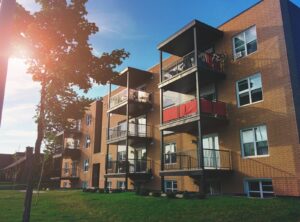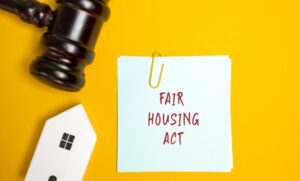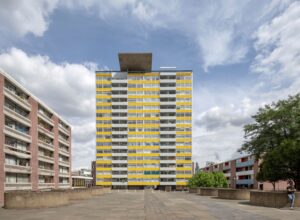Innovation, especially in construction, is a very difficult concept. For every person pushing forward with a new technique, material or management process there will always be ‘greybeards’ coming up with reasons why not to do it. There is considerable evidence that ill thought out or too rapidly adopted techniques can have disastrous consequences.
The Crescents in Hulme, built from ill-fitting concrete panels and pressed straw and cement board – which were not only ugly but also cold, damp and unpleasant – are one example. Another was the mass roll-out of timber framing in the 1980s when it suddenly became the thing to do, without any thought about how the construction process needed to adapt. I remember a very desultory wet afternoon on a site in Bootle where the slabs were in and the timber framing for all the ground floors on about 100 homes was either standing in puddles or stacked in the open, sinking in to the quagmire.
There is slow adoption of some alternative methods and new materials, but this is evolutionary change. To make the step change in the number of homes that we need to build in the UK, we must consider the construction process and what we can learn from other sectors.
Innovation revolves around three factors: quality, pace and sustainability.
Looking at these in turn:
Quality – there are too many homes across the country that are poor quality, either because they need continuing investment to keep them warm and dry, or because the design does not fit modern lifestyles and because people live longer, staying longer in their home despite diminished mobility. Reconsidering design and specification needs to drive up standards and think through how household needs evolve over time.
Pace – the shortage of homes suggests that we need to build more homes and quicker. For me, this suggests reviewing the design and construction process for new homes, learning from advanced manufacturing, applying its techniques and principles to improve the efficiency of the whole process of building and operating homes.
Sustainability – while energy prices currently are low(er) this is a temporary blip, energy costs are a major part of household budgets and water is going to be scarcer with climate change. So there is a need to use less energy and water in building, create less waste and consider how much the home will cost to maintain over its lifetime. This is as well as ensuring that the costs of running the home are minimised, whether this is lower fuel bills or reducing the amount of water used.
At the same time, reducing the cost of building each home is critical while achieving these requirements. The cost of land is a major element in popular locations and will increase development costs through both the initial purchase price and the incremental costs of acquisition including finance. Building on brownfield sites can reduce the price paid for land but result in higher clean-up costs.
Too often, the response to any innovation is to call for pilots and research. This defers adoption and often by the time the particular innovation has been tested thoroughly and reports published conditions have changed. Something else is in favour and the cycle starts again.
There is a solution available and it is simple. The current round of Housing Zones and the Starter Homes Initiative are about to start building. It is open to government to make its financial support contingent on the use of innovative techniques in design, in specification, construction and in construction management: not just lip service but a rigorous programme to find new ways to build homes that last into the future.


















We have been trying to bring cultural change within the construction industry through mass production techniques. Visit our website http://www.build-eco.com